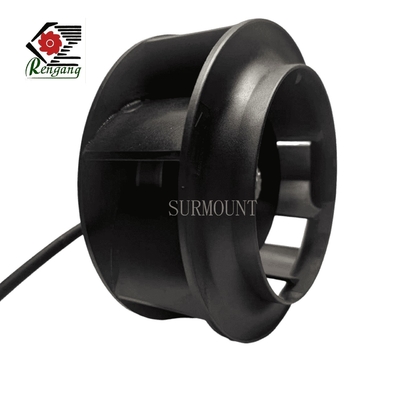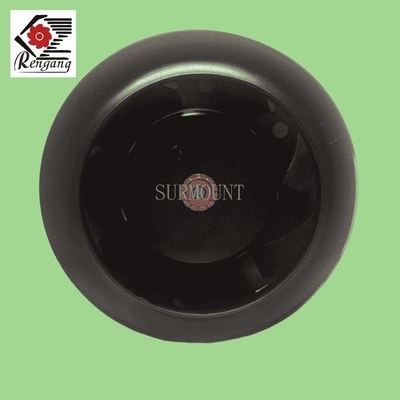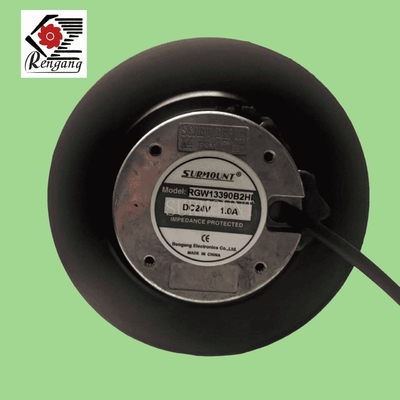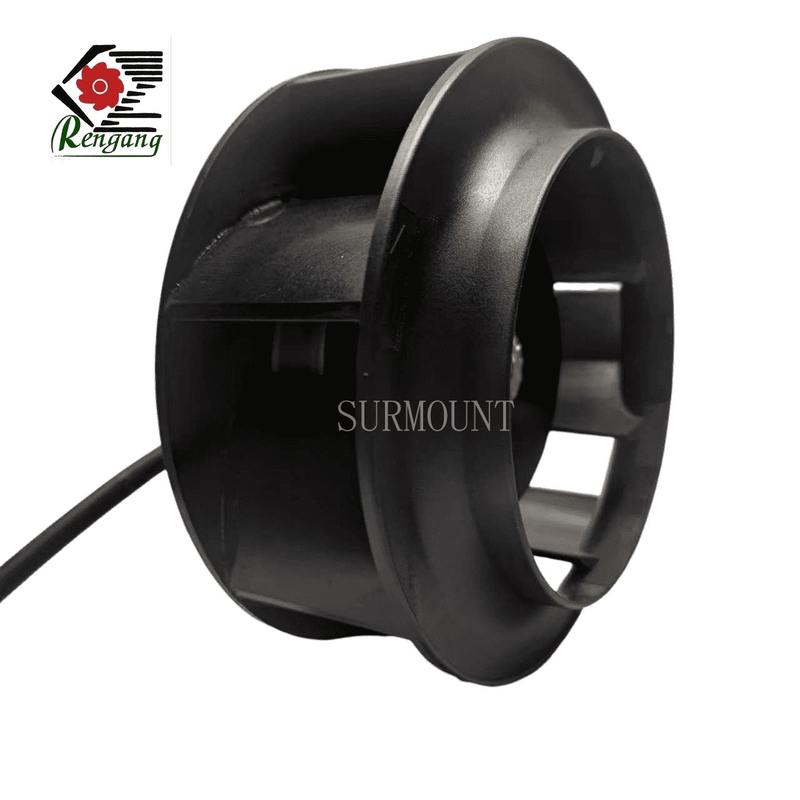4150RPM 24V 48V DC Centrifugal Fan 133X91mm Ball Bearing Alloy Aluminum Frame
Product Details:
| Place of Origin: | China |
| Brand Name: | Surmount |
| Certification: | CE, RoHS |
| Model Number: | RGW13391 |
Payment & Shipping Terms:
| Minimum Order Quantity: | 50PCS |
|---|---|
| Price: | Negotiable |
| Packaging Details: | carton/pallet/customized |
| Delivery Time: | 8-10 working days |
| Supply Ability: | 600 pieces per day |
|
Detail Information |
|||
| Size: | 133x91mm | Frame Material: | Alloy Aluminum |
|---|---|---|---|
| Impeller Material: | Alloy Aluminum | Weight: | 720g |
| Rated Voltage: | 24V/48V | Rated Current: | 1.20 ~ 0.55A |
| Rated Input Power: | 28.8 ~ 26.4W | Speed: | 4150RPM |
| Airflow: | 225CFM | Noise: | 61dBA |
| Bearing Type: | Ball Bearing | Color: | Black |
| Ingress Protection: | IP54 | ||
| High Light: | soft wind DC Centrifugal Fan,4150RPM DC Centrifugal Fan,Ball Bearing DC Centrifugal Fan |
||
Product Description
DC Centrifugal Fan 133x91mm 24V/48V Used On Air Cleaner Air Conditioner
What is a centrifugal fan used for?
Because of the high pressure they create, centrifugal fans are ideal for high-pressure applications such as drying and air conditioning systems.
As all of their moving parts are enclosed and they also have particulate reduction properties that make them ideal for use in air pollution and filtration systems.
What is the difference between a centrifugal fan and a blower?
The casing in the center of the wheel uses centrifugal force to propel the air forward into the open.
A fan circulates air around an entire room or space. A blower circulates the air only on a specific or pointed area.
It is used less pressure to produce large amounts of gas.
DC Centrifugal Fan RGW13391
Basic Parameter:
The Models listed below have pulse sensors with PWM control Function.
![]()
**PWM frequency: 25 kHz does not rotate with PWM duty cycle is 0%.
Airflow - Static Pressure Characteristics / PWM Duty - Speed Characeristics Example
RGW13391B2HL (24v) with pulse sensor with PWM control function
![]()
RGW13391B2HL (48v) with pulse sensor with PWM control function
![]()
Dimensions (mm)
![]()
Reference Dimensions of Mounting Holes and Vent Opening (mm)
![]()
Reference Diagram for Mounting
![]()
Payment:
1.Trade Assurance: In the first order, we suggest you use Trade Assurance.
2.T/T: If stocks,100% payment before shipping; if customized order, 30% deposit before production and balance 70% should be paid before delivery.
3.Western Union, Money Gram, Paypal, all available.
4.L/C: for large order.
![]()
Shipping:
1.ln general, we use international express, DHL, UPS,FedEx,EMS,TNT, etc.Large order: by air or sea, you should choose it.
2. if you have your own forwarder, please tell us the detailed information.
![]()
1. What is a DC Axial Fan?
A DC fan is usually powered by 3v, 5v, 12v, 24v, 36v, and 48v. It blows air along the axis of the fan, or parallel to the track of the blade axis. Standard DC Axial fan sizes include 20mm, 30mm, 40mm, 50mm, 60mm, 70mm, 80mm, 92mm,120mm, 150mm, and 200mm.
2. How to choose a DC fan?
To choose a DC fan, you should consider the points below
fan size(mm):
fan speed(rpm):
fan airflow(CFM):
fan noise level(dBA):
fan start voltage(v):
fan current(A):
fan connector:
3. What is a Bearing?
Fan bearing includes Sleeve Bearing, Hydraulic Bearing and Ball Bearing, life expectancy of sleeve bearing fan is 30000 hours, hydraulic bearing fan is 40000 hours , while ball bearing is 55000hours or more.
4.What is the delivery time?
Sample lead time:7-10 days
Mass production Delivery lead time: 20 days
Delivery Ways: DHL, UPS Door to Door service, By Air, By Sea, etc.
5. What can I do if we can not find a suitable fan model on the fan list?
Please feel free to contact us for customized fans.
* Such as moisture-proof, waterproof, turbocharger, soft start, Reversible, temperature control, PWM speed control, the RD alarm and the FG signal etc.
IP 55: Protection of motor and PCB board against splashed water and humidity.
Speed signal: The fan uses a separate wire to output information about its speed, and thus about the speed of the rotor.
PWM control input: The speed of the fan can be changed via a pulse-width modulated signal. This signal is applied to a specially provided wire.








